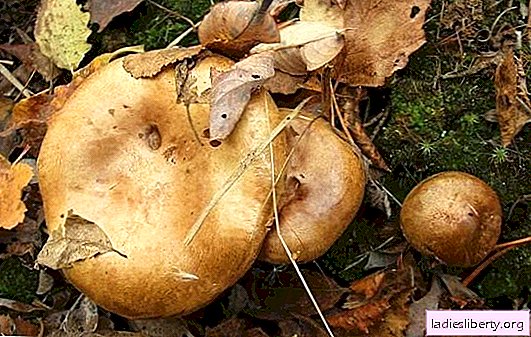
Labasnik - general description
The well-known medicinal plant meadowsweet (Latin Filipendula) has a second name - meadowsweet. This is a perennial rosaceous grass belonging to the family Rosaceae. The meadowsweet reaches a relatively large size, has a powerful rhizome and an erect stem with cirrus or palmate leaves. The flowering is plentiful, falls at the beginning of summer. Flowers of meadowsweet of a white or pinkish hue, collected in panicled inflorescences with a double perianth. A calyx consists of five to six petals. Fruits appear in July-August in the form of multi-roots. Lubaznik is hygrophilous, resistant to cold.
Labaznik - types and places of growth
Labaznik is an extremely common plant; it can be found almost everywhere in the temperate climatic zone of the Northern Hemisphere. In nature, there are about 10-13 species of this plant, including: narrow-lobed meadowsweet (grows in the Far East, northern China, in Primorye and Amur regions), Kamchatka meadowsweet (common in Kamchatka, the Kuril Islands, Japan), dagus-like meadowsweet (found in Primorye, in Kamchatka, the Kuril Islands, in the Khabarovsk Territory and in the south of the Magadan Region), meadowsweet red (grows in North America) and many others. In the European part of Russia, in the Caucasus and in Western Siberia, the most common is the meadowsweet. It can be found in forests, along the banks of water bodies, along rivers and streams and other places with well-moistened soil. The peculiarity of this type of meadowsweet is a height of 1.5-2.0 meters, as well as intermittently pinnate leaves, having a smooth surface and a bright green color on top, and felt reminiscent in structure from below. The flowers are yellowish white numerous with a pungent odor. The leaves, when rubbed, also emit a characteristic odor.
Labaznik - medicinal properties
The meadowsweet has an extremely wide range of applications in medicine. This is due to its composition, which includes vitamin C, tannins, phenolic compounds, as well as salicylic acid and its derivatives (salicylic aldehyde, methyl salicylate, etc.). Rhizomes of plants also contain phenol glycosides (monotropitin and spirein), flavonoids and chalcones. The stems and leaves are composed of catechins, phenolcarboxylic acids (ellagic and coffee), essential oils and higher fatty acids (linoleic, stearic, etc.). Due to this rich composition, meadowsweet can be used as a tonic, restorative, sedative, bactericidal, diuretic, astringent, hemostatic, wound healing and anthelmintic. It also has a choleretic property and is able to enhance the ability of the liver to fight toxic lesions of the body. In addition to the above, meadowsweet remedies help with headaches, rheumatic joint injuries, diabetes mellitus and can also be used as an antiviral agent.
Labasnik - dosage forms
For the preparation of medicines, all parts of the plant are used (rhizomes, stems, leaves and flowers). Medicines are prepared from meadowsweet in the form of decoctions, tinctures or ointments for external use. Mushroom decoction is used to treat intestinal disorders, dysentery, rheumatism, epilepsy, gout, inflammation of the kidneys and bladder, as an antiulcer, sedative, wound healing and hemostatic agent, as well as for douching for gynecological diseases. A decoction, which includes the roots and flowers of meadowsweet, is a good remedy for arterial hypertension, for nervous disorders, worming and diseases of the upper respiratory tract. Tincture of meadowsweet on alcohol or ointment is used to treat trophic ulcers and other skin lesions.
Labaznik - recipes
To prepare a decoction of meadowsweet, you need to take 1 teaspoon of chopped dried plants, pour 2 cups of boiling water, boil in a water bath for 30 minutes, then strain and dilute with water to the original volume. Take - 1 tbsp. 3 times a day after meals. For douching, a decoction is prepared at the rate of 20 g of meadowsweet per 1 liter of water.
An infusion of meadowsweet is prepared as follows: take 1 tsp for 250 ml of cold boiled water. shredded rhizomes of meadowsweet, insist 6-8 hours. Strain, take during the day in small sips 3-4 times.
To prepare the ointment, you need 20 g of powdered dried meadowsweet and 100 g. petroleum jelly or lanolin. Lubricate this lesion on the skin 3-4 times a day.
Lubaznik - contraindications
A contraindication to the use of the drug is pregnancy. You should not apply meadowsweet to people suffering from chronic constipation, a tendency to hypotension and poor blood coagulation. In other cases, you should definitely consult with your doctor.
Comments











